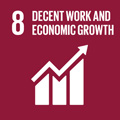- Docente: Nicola Tomesani
- Credits: 3
- SSD: SECS-P/08
- Language: English
- Teaching Mode: Traditional lectures
- Campus: Bologna
- Corso: Second cycle degree programme (LM) in International Management (cod. 5891)
-
from Apr 08, 2025 to May 21, 2025
Learning outcomes
"Businesses worldwide face a fundamental change in the ways that consumers interact with companies. New digital channels are used by customers to purchase and search information about brands, products and services. This new digital world represents a great opportunity for companies willing to expand their customer base and their profitability. New media also helped give consumers a voice and more possibilities to directly interact with companies and organizations through different channels. This course offers an overview of how marketing has (and has not) changed due to the rise of social media and new multiple channels that customers use in their search, purchase and after purchase activities. It covers relevant related aspects in digital marketing, digital commerce, and social media marketing. Also, since social media and digital channels are heavily data-driven the course introduce and discuss new media metrics. The course uses readings, case studies, computer lab exercises, and team work projects. The students taking this course develop skills in the following areas: - Strategic marketing aspects of social media and digital commerce analytics, - Metrics for assessing the effectiveness of social media strategies, - Collecting and analyzing social media, and digital commerce data, - Practical analytical and technical skill. "
Course contents
Media landscape and trends
Three main strategies: search, display, social
Features and use of display advertising
Search Engine Activities
Social Media Strategies
Email marketing
Analytics and intelligence
Digital media plan
Readings/Bibliography
Digital Marketing Strategy, Pierre-Yann Dolbec
https://opentextbooks.concordia.ca/digitalmarketing/#:~:text=EPUB-,Digital%20PDF,-Print_pdf
Teaching methods
The course is based on lectures, case studies, exercises, and team work projects.
Assessment methods
Attending students will be evaluated on a survey they have to prepare during the course.
Non attending students have to sustain a written exam, based on two open questions, with a score between 0 and 16. The maximum score obtainable by providing all correct and complete answers is therefore equal to 30 cum laude.
The test is passed with a minimum score of 18/30. The time available to students for the written test is 120 minutes. During the test the use of support material such as textbooks, notes, computers is not allowed.
Basic evaluation criteria are:
- Sufficient preparation and analytical skills, expressed in a formally correct language → 18-22 grade;
- Technically adequate preparation, sufficient analytical skills, even if not particularly articulated, expressed in correct language → 23-26 grade;
- In-depth knowledge of the topics covered in the course, good analytical and critical skills, mastery of specific terminology → 27-29 grade;
- Very in-depth knowledge of the topics covered in the course, critical analysis and connection skills, mastery of specific terminology → 30-30L. grade.
Office hours
See the website of Nicola Tomesani
SDGs



This teaching activity contributes to the achievement of the Sustainable Development Goals of the UN 2030 Agenda.
